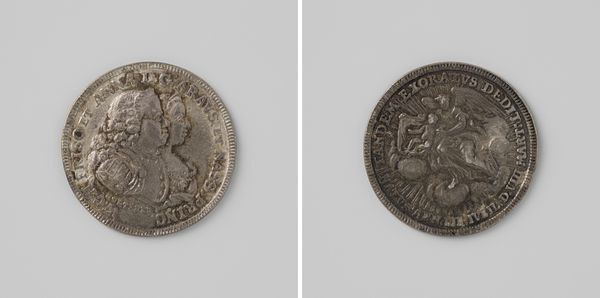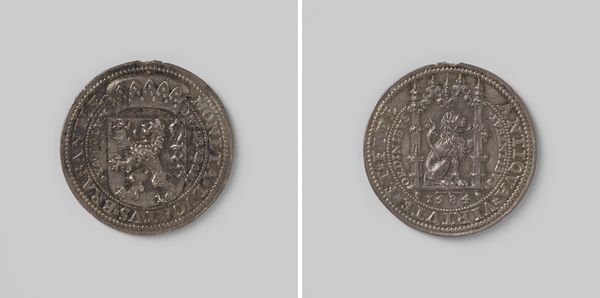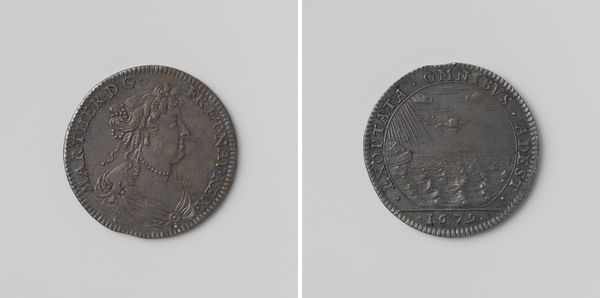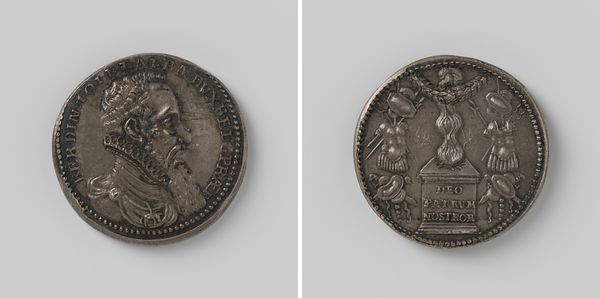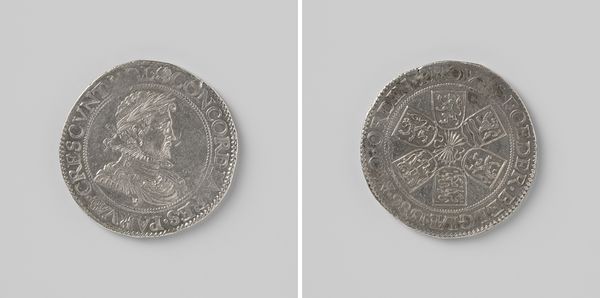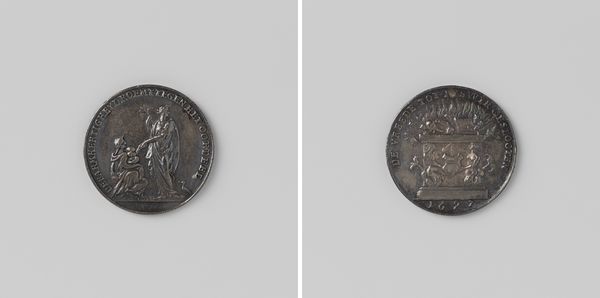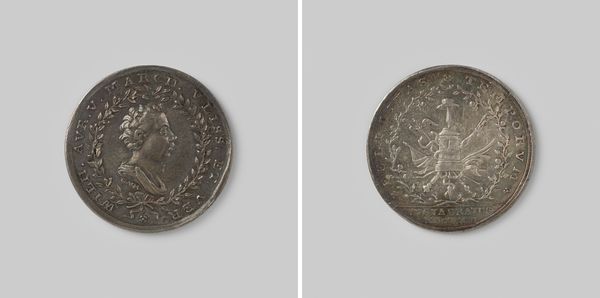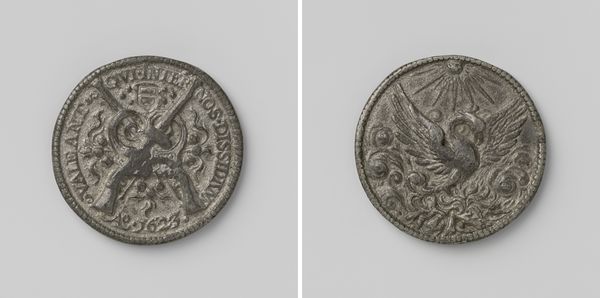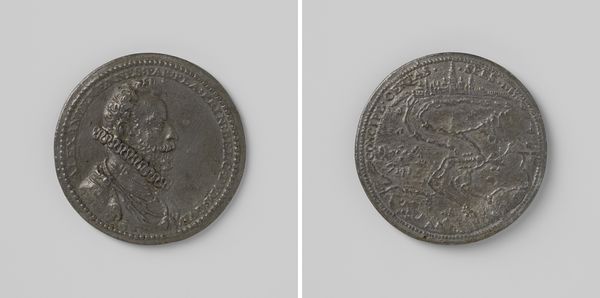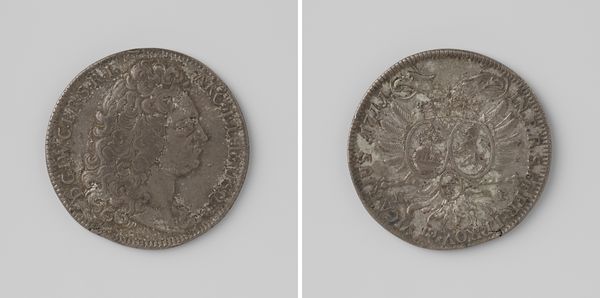
print, metal, relief, engraving
#
portrait
#
baroque
# print
#
metal
#
relief
#
ancient-mediterranean
#
engraving
Dimensions: diameter 3.3 cm, weight 14.81 gr
Copyright: Rijks Museum: Open Domain
Curator: Here we have an engraved medal titled "Ridderlijke Confrerie van de Handbussche te Delft" or "The Guild of the Arquebus of Delft," created around 1718. Gerard van Loon is credited with its design. Editor: Well, my first impression is... faded grandeur. It’s so worn; you can barely make out the figures. There's an almost ghostly feel to the low relief, it feels like I'm holding a piece of buried history. Curator: Precisely! This medal offers insight into the social fabric of Delft during the early 18th century. These civic guard guilds held significant social and political power, and commissions like this solidified their standing. Note the classical figures alluding to civic virtues, very popular during the Baroque. Editor: The fact that it's an engraving made in metal intrigues me. Consider the labour that would have gone into this! Each tiny groove cut to create an image celebrating these bourgeois citizen-soldiers. Did these confreries actually use or wear these, do we know? Curator: I imagine they were quite treasured possessions within the confrerie. It functioned, likely, as a badge of honour. Badges signified allegiance and were often flaunted as public declarations of standing. The use of Latin in the inscription further elevated its perceived authority. Editor: Look how this use of a costly metal affirms its importance: a form of "conspicuous consumption" amongst the burghers! I imagine, with this kind of craftsmanship, the person engraving this must have enjoyed some patronage as well from this organization and similar guilds? Curator: Certainly. Medals and commemorative objects were important commissions for artists in this era, functioning similarly to state or public art today. They served to commemorate, promote and sometimes to manipulate opinion. Editor: So it is essentially propaganda? These engraved details in relief—every line served to enforce authority! That adds a layer of complexity to something seemingly simple, a beautiful metal artifact crafted, by someone for the consumption and display for the Guild. Curator: It demonstrates how objects can embody social and political ambitions, solidifying social status through imagery and display. Editor: It makes you think about all the hands it must have passed through, a humble, metallic witness to a bygone Delft society. Curator: Indeed, an object lesson in how power is often forged, stamped, and circulated.
Comments
No comments
Be the first to comment and join the conversation on the ultimate creative platform.
